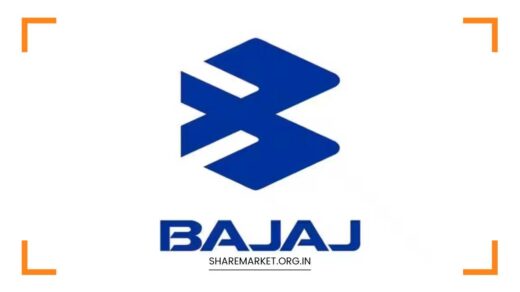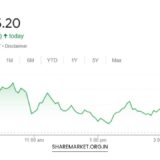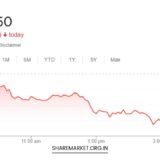India GDP Growth Rate Expected to Be More Than 6% in FY 2024

India GDP Growth Rate
According to Jitendra Gohil, an expert from Credit Suisse Wealth Management India, there are positive indicators in the auto sector, as the supply-side issues have eased, and there is potential for further improvement.
Additionally, with the decline in commodity prices, the conditions for the auto sector may become even more favorable.
Gohil expresses a bullish sentiment about India, believing that the country’s growth potential is underestimated by the market.
He suggests that India’s growth rate for FY2024 could surpass the estimated 6 percent, particularly if global crude oil prices decrease due to a weak global outlook. This factor could contribute to a higher growth rate for India.
Gohil, who possesses more than 20 years of experience in capital markets, mentions that going forward, non-banking financial companies (NBFCs) and the banking sector are expected to perform well as liquidity conditions improve.
This implies that these sectors may benefit from improved access to funding and a more supportive financial environment.
Gohil anticipates a positive outlook for the non-banking financial company (NBFC) and banking sectors, attributing it to the expected improvement in liquidity conditions and the potential decrease in interest rates within the next 9-12 months.
Additionally, Gohil foresees an enhancement in consumption levels. However, he cautions that a poor monsoon season could pose a risk to both the market and the overall economy.
When asked about his outlook on rate-sensitive segments such as banks, NBFCs (non-banking financial companies), real estate, and the auto industry, Jitendra Gohil expressed his positive stance.
He stated that he has been advising investments in these sectors for the past few months. Gohil believes that interest rates in India may have reached their peak, which can be advantageous for these sectors.
Furthermore, he expects that the Reserve Bank of India (RBI) will have the flexibility to reduce interest rates during the remaining part of the financial year, as inflation is projected to align with the RBI’s tolerance level.
While NBFCs have faced underperformance thus far, there is an optimistic view regarding their potential for outperformance in the future.
This expectation is based on the anticipated decline in interest rates over the next 9-12 months and an improvement in liquidity conditions.
Furthermore, the banking sector is likely to experience robust credit growth in the second half of the year, which would benefit NBFCs.
The overall growth outlook for India is regarded as highly positive, and banks are expected to reap the advantages of this favorable environment.
In terms of the real estate sector, there have been notable improvements in its fundamental aspects. Jitendra emphasizes his preference for prominent and high-quality developers within this sector.
When asked about his perspective on the FMCG (Fast Moving Consumer Goods) and consumer durables sectors and their potential benefits from rural recovery, Jitendra expressed a positive outlook.
He stated that these sectors are likely to experience overall margin improvement, primarily driven by a significant decline in commodity prices.
Additionally, there are indications of improved demand in rural areas, as evident from the strong sales of passenger cars and tractors.
Furthermore, two-wheeler sales have also started to show signs of recovery, which is considered a positive signal for these sectors.
The management of various companies has provided commentary indicating the emergence of a revival in rural consumption.
In addition to enhanced financing options, factors such as pre-festive season restocking, the upcoming Cricket World Cup scheduled for October-November, and the general elections in May 2024 are anticipated to contribute to an acceleration of consumption levels in the country within the next 6-12 months.
There has been a reduction in the supply-side problem within the auto sector, and there is a potential for further improvement in conditions. The decreasing commodity prices also contribute to a more favorable outlook for the auto sector in the future.
Additionally, there is a positive sentiment towards the quick-service restaurant segment.
Jeetendra expressed a positive stance regarding the QSR (quick service restaurant) segment, indicating his newfound optimism.
He believes that the industry will witness an improvement in its overall condition, particularly in terms of commodity prices, which are expected to decline. This reduction in commodity prices is anticipated to contribute to margin growth within the segment.
Consumption stocks face a potential risk in the form of a poor monsoon. Nonetheless, the government is proactively implementing measures to mitigate food inflation by imposing import and export restrictions as deemed necessary.
Moreover, the government’s various initiatives have reduced the reliance on monsoon for sustaining consumption patterns.
Jitendra Gohil expressed a continued preference for maintaining a cautious outlook on the IT sector, a stance he has held for over a year.
He expects a potential decline in both the earnings and valuations of IT companies. The upcoming June quarter results for IT companies are anticipated to be unfavorable. Therefore, he suggests assessing the IT sector even after the earnings correction has concluded.
Disclaimer: The opinions expressed on sharemarket.org.in are solely the personal views of the experts. The website or management bears no responsibility for these views. We strongly advise users to seek certified expert advice before making any investment decisions.

















